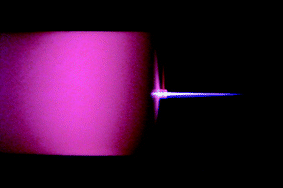Dielectric barrier discharges in analytical chemistry
Abstract
The present review reflects the importance of dielectric barrier discharges in analytical chemistry. Special about this discharge is—and in contrast to usual discharges with direct current—that the plasma is separated from one or two electrodes by a dielectric barrier. This gives rise to two main features of the dielectric barrier discharges; it can serve as dissociation and excitation device and as ionization mechanism, respectively. The article portrays the various application fields for dielectric barrier discharges in analytical chemistry, for example the use for elemental detection with optical


 Please wait while we load your content...
Please wait while we load your content...